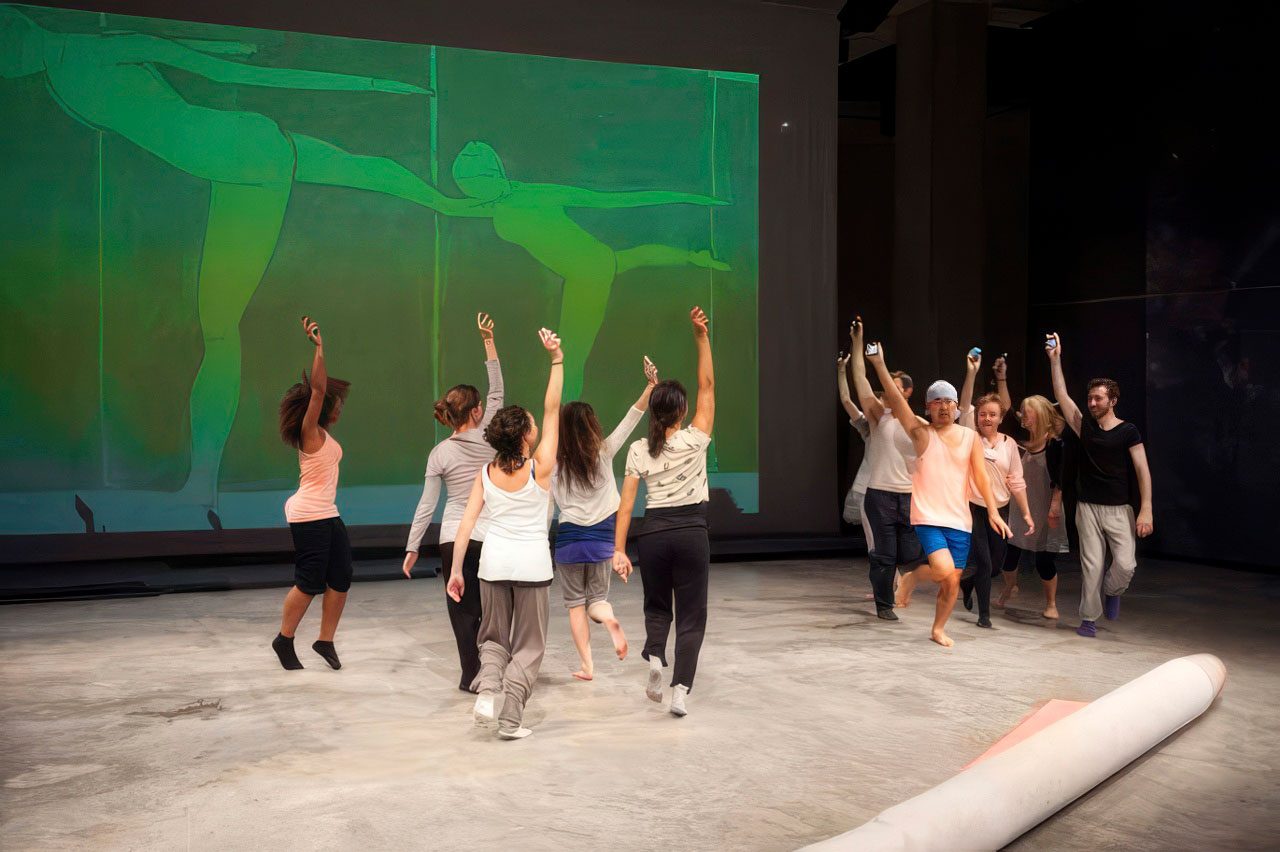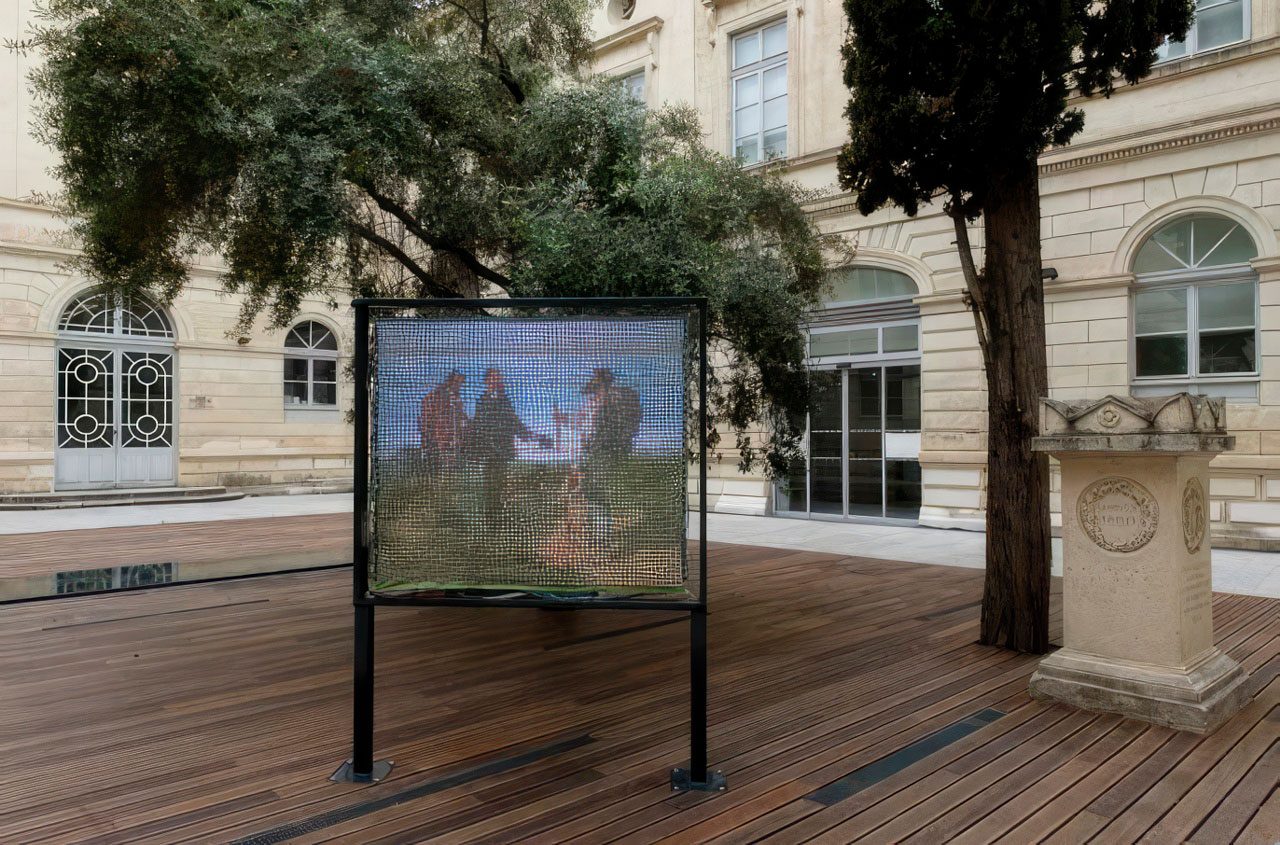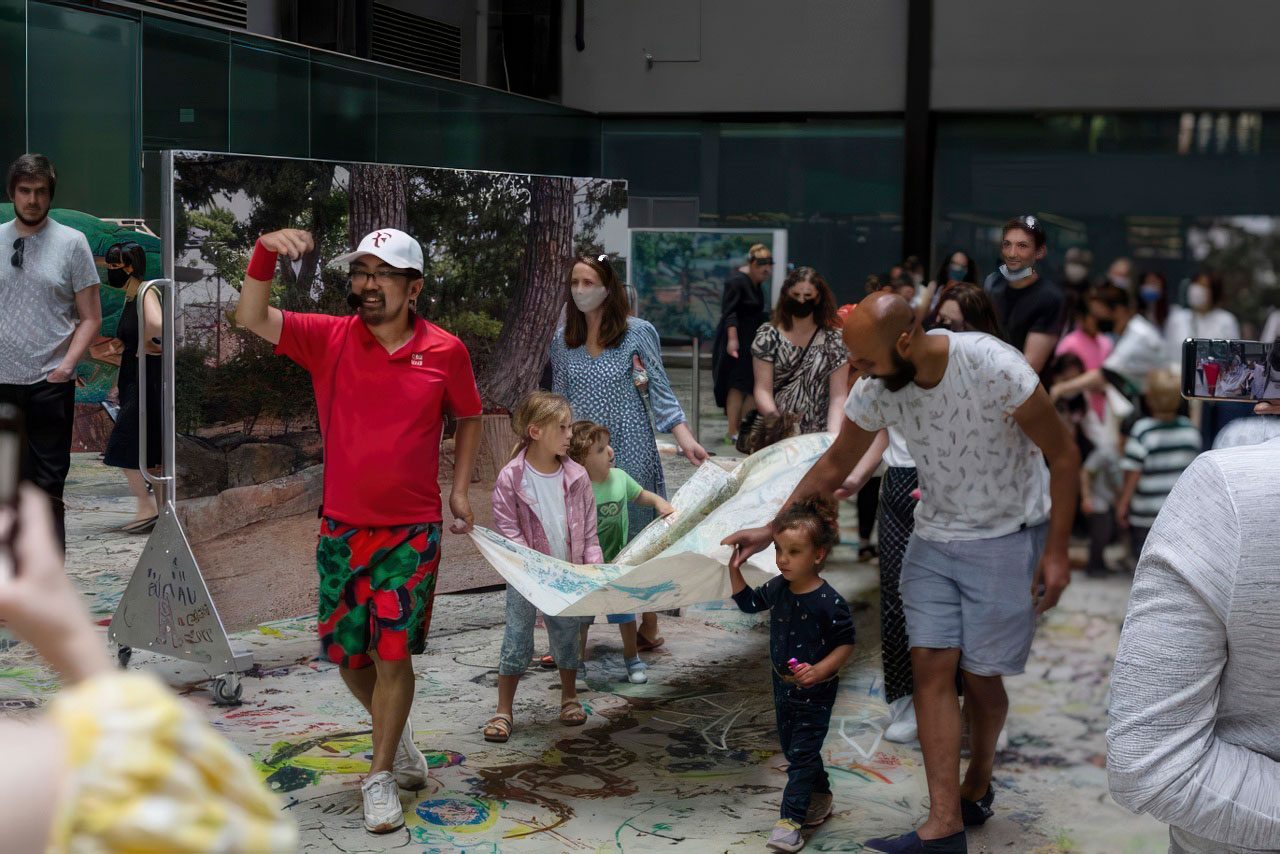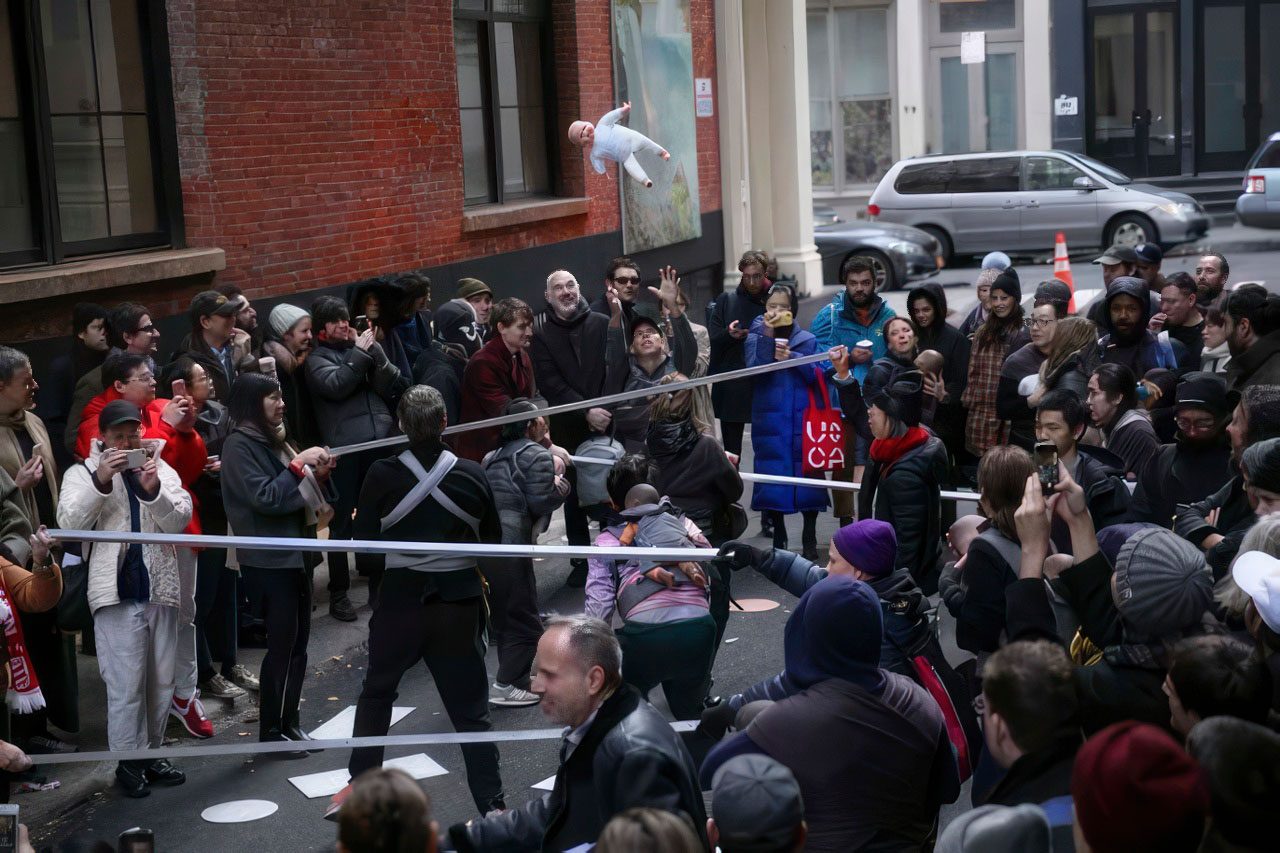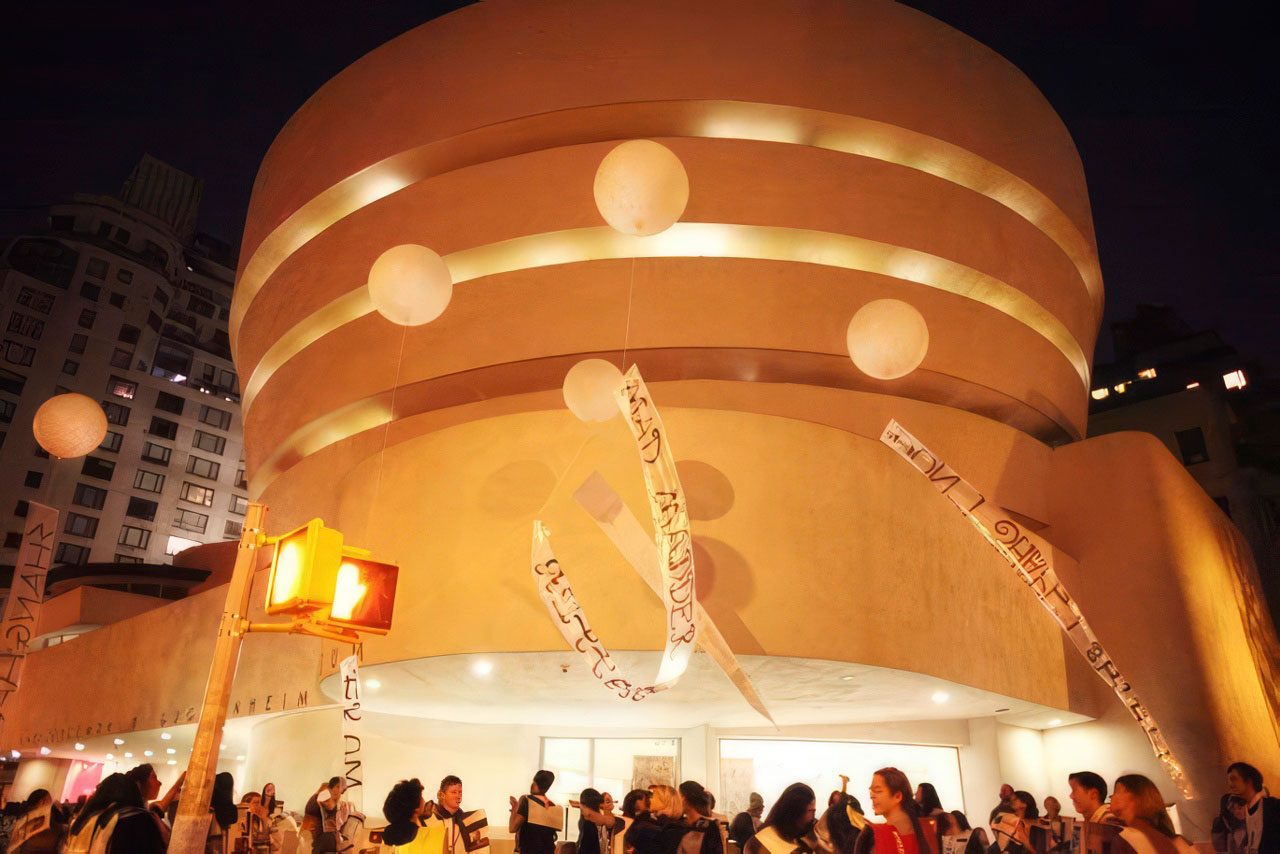ART CITIES: Tokyo-Ei Arakawa Nash
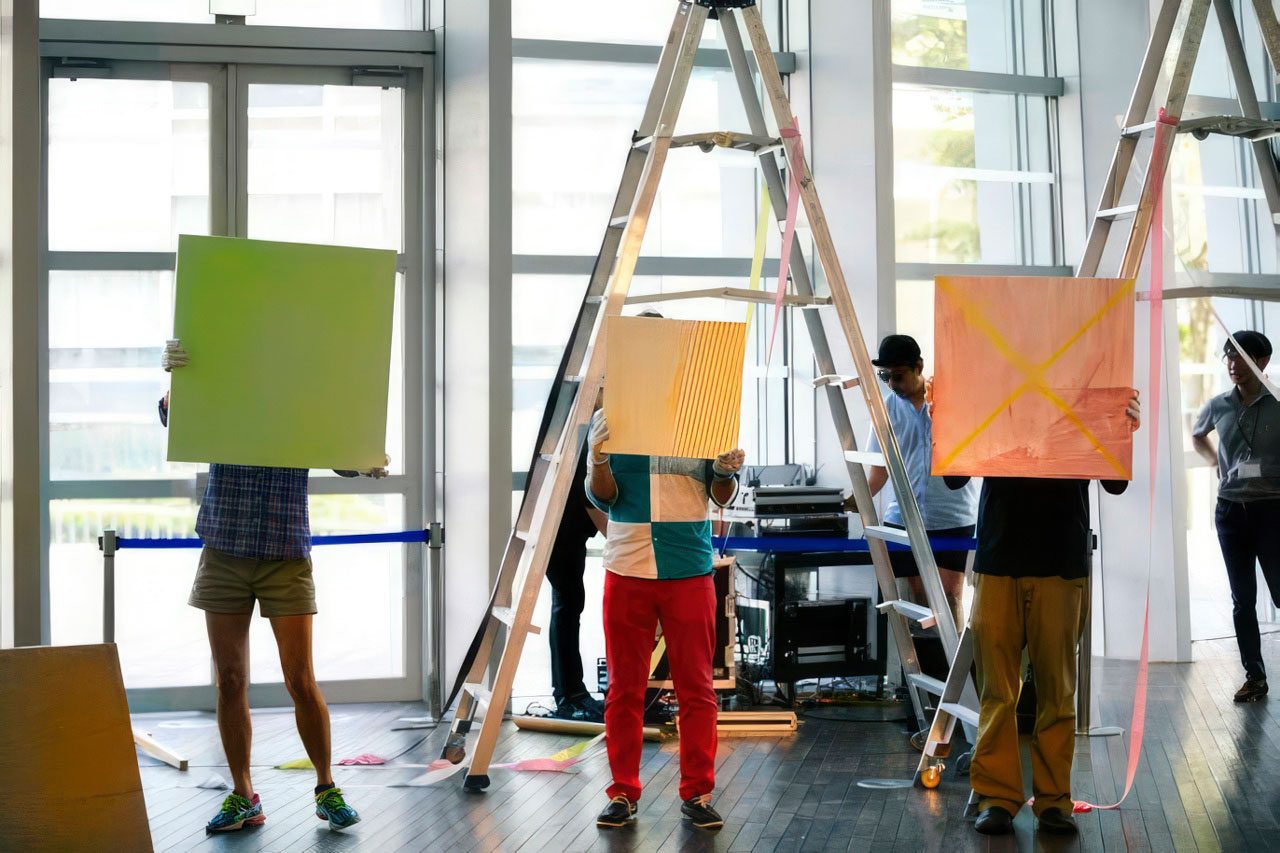 Ei Arakawa-Nash is a Japanese American artist, he makes collaborative art inspired by art history – art made with other people, involving art from other times and places. Many of his artworks are performances, which he sometimes makes by working with other artists and with art historians. Arakawa removes the boundary between audiences and performers by inviting the audience to participate.
Ei Arakawa-Nash is a Japanese American artist, he makes collaborative art inspired by art history – art made with other people, involving art from other times and places. Many of his artworks are performances, which he sometimes makes by working with other artists and with art historians. Arakawa removes the boundary between audiences and performers by inviting the audience to participate.
By Efi Michalarou
Photo: NACT Archive
Ei Arakawa-Nash’s performances are created through collaborations with various people including contemporary artists and art historians. The means of these collaborations are diverse, with such figures physically participating as performers, and in other instances their works themselves making appearances. Arakawa also invalidates the boundary between the performers and the audience by inviting the audience to participate in an improvisational manner, thus converting them from the role of passive viewers to active subjects of the performance. In the context of contemporary art that is based on notions of individualism as articulated in western modern ideology. Ei Arakawa-Nash’s act of establishing the intersection between collaborations with other artists and the audience as his very practice, can be seen as an intention to liberate his works from the subjective framework of the self “Paintings Are Popstars” is first solo museum exhibition in Asia by Ei Arakawa-Nash, who has been at the forefront of renewing the visibility and advancement of performance art internationally since the 2000s. The exhibition is a solo show by Arakawa-Nash, but the works of more than fifty musicians, painters, and others who collaborate with him will also appear. Each of the paintings and pieces of music is worshiped as if it were a pop star with its own aberrant presence, and Arakawa-Nash will generate performances inspired by the attitudes of pop stars. The Exhibition Highlights are: “Performances with paintings”: The performances scheduled during the exhibition include Mad Garland, a communicative dance through paintings; Tabards for Ei, 50 wearable paintings; and Nemesis Painting, in which visitors are sucked into paintings. “Weekly artist-led tours”: The design of these tours is: “Free to hop on and off. You can join and leave when you want.” The performance schedule is on the museum website. The English tour will be led by Forrest Arakawa-Nash, the artist’s husband and the founder of Contemporary Art Library. “Mega Please Draw Freely”: In 2021, the Turbine Hall at the Tate Modern first presented Arakawa-Nash’s “Mega Please Draw Freely”, a tribute to Jiro Yoshihara of the Gutai Art Association. The current iteration of this participatory installation, which will take place every Sunday during the exhibition’s run, allows anyone to draw freely on the floor of the museum. After the exhibition, this installation will travel to Haus der Kunst, Munich, in 2025. “Rare Painting Sightings”: This includes drawings from 1964 by On Kawara that incorporate imagery of a newborn baby and homosexuality; a painting by Miyoko Ito, a Japanese American abstract painter who has gained wider recognition in recent years; Nicole Eisenman’s rarely seen portraits of her children; a new twin-stroller painting by Yui Yaegashi; Kerstin Brätsch’s seven Kite Paintings; new works by Oscar Murillo activated with the Japanese public; and a new 6-meter painting-structure by Shimon Minamikawa. “Music x Painting Projects”: YUMING and Masataka Matsutoya inspired by Henri Matisse / Saho Terao inspired by Toshi Maruki (Toshiko Akamatsu) / Miho Hatori with Ei Arakawa-Nash inspired by David Medalla / Kim Gordon inspired by Yoko Ono. “LED Painting Fantasies”: The Japanese philosopher and writer Masaya Chiba’s first play script will be performed by four LED reproductions of paintings by Robert Rauschenberg. Their multiple voices will be provided by the chameleon-like voice actor Ayumu Murase. The exhibition will also feature LED reproductions of the 1950s Lower Manhattan queer scene that included artists Robert Indiana, Ellsworth Kelly, and Agnes Martin. “Film interpretations of performance and painting”: Arakawa-Nash invited the artist Reiji Saito to film Arakawa-Nash’s performances for Saito’s own film pieces. Some performance locations are the National Art Center, Tokyo, in its Kisho Kurokawa–designed building; the Otsuka Museum of Art in Tokushima Prefecture; and Tokyo’s latest cultural and commercial development, Azabudai Hills. A newly restored 1967 video work by Bruce Conner, which features American painter Jay DeFeo’s 900 kg painting entitled The Rose (1958–66) and Miles Davis’s “Concierto de Aranjuez” (1960) will also be screened. “Birth Countdown!”: Using egg donation and surrogacy in California and Texas, USA, Arakawa-Nash and his husband are expecting twins to be born on December 30, 2024. In the section of the exhibition titled “Painting & Parenting,” a countdown timer will be set up at the museum to announce on a national stage the arrival of babies for queer dads.
Ei Arakawa-Nash performing with works by: Forrest Arakawa-Nash with Yuki Tanaka, Kerstin Brätsch with Hayata Ishikawa & Noboru Ishikawa, John Cale/Tony Conrad/Terry Riley, Masaya Chiba with Ayumu Murase, Leidy Churchman, Bruce Conner/Miles Davis/Jay Defeo, Maya Deren & Teiji Ito, Nicole Eisenman, Kim Gordon, HappiLife Channel, Miho Hatori, Celia Hollander, Karl Holmqvist, Miyoko Ito, Kosuke Kameda, Yuki Katsura, On Kawara, Jutta Koether, Yasuo Kuniyoshi, Toshi Maruki (Toshiko Akamatsu) with Saho Terao, Henri Matisse with Yumi Matsutoya & Masataka Matsutoya, Shimon Minamikawa, Daishiro Mori with Ito Mori, Oscar Murillo with Piaopiao Gong-Yang/Yuki Ito/Siying Li/Jingwei Ou, Luis Nishizawa, Silke Otto-Knapp with Asahi Ishikawa/Ikumi Yang, Laura Owens, Gela Patashuri, Dan Poston, Seth Price, Quartet Arco, Reiji Saito, Trevor Shimizu, Fujiko Shiraga, Amy Sillman with Marina Rosenfeld, Atsuko Tanaka, Theatre Company LGBTI Tokyo with Yuriko Kozumi/Pico (Takahiko Saito)/Mayu Takahashi, Reiko Tomii, Frieda Toranzo Jaeger, UNITED BROTHERS, Yui Yaegashi, Jiro Yoshihara, museum volunteers aged 65 & older, and others.
Photo: Ei Arakawa×Shimon Minamikawa, An Evening with Triangular Horses, 2013, The National Art Center, Tokyo, Photo: Kenji Takahashi Courtesy of the artist and The National Art Center, Tokyo
Info: Curator: Naoki Yoneda, Assistant Curators: Kosuke Kameda, Ayako Miyajima, Yukako Yamada, and Ritsu Yoshino, The National Art Center, Tokyo (NACT), 7-22-2 Roppongi, Minato-ku, Tokyo, Japan, Duration: 30/10-16/12/2024, Days & Hours: Wed-Thu, Sun-Mon 10:00-18:00, Fri-Sat 10:00-20:00, www.nact.jp/

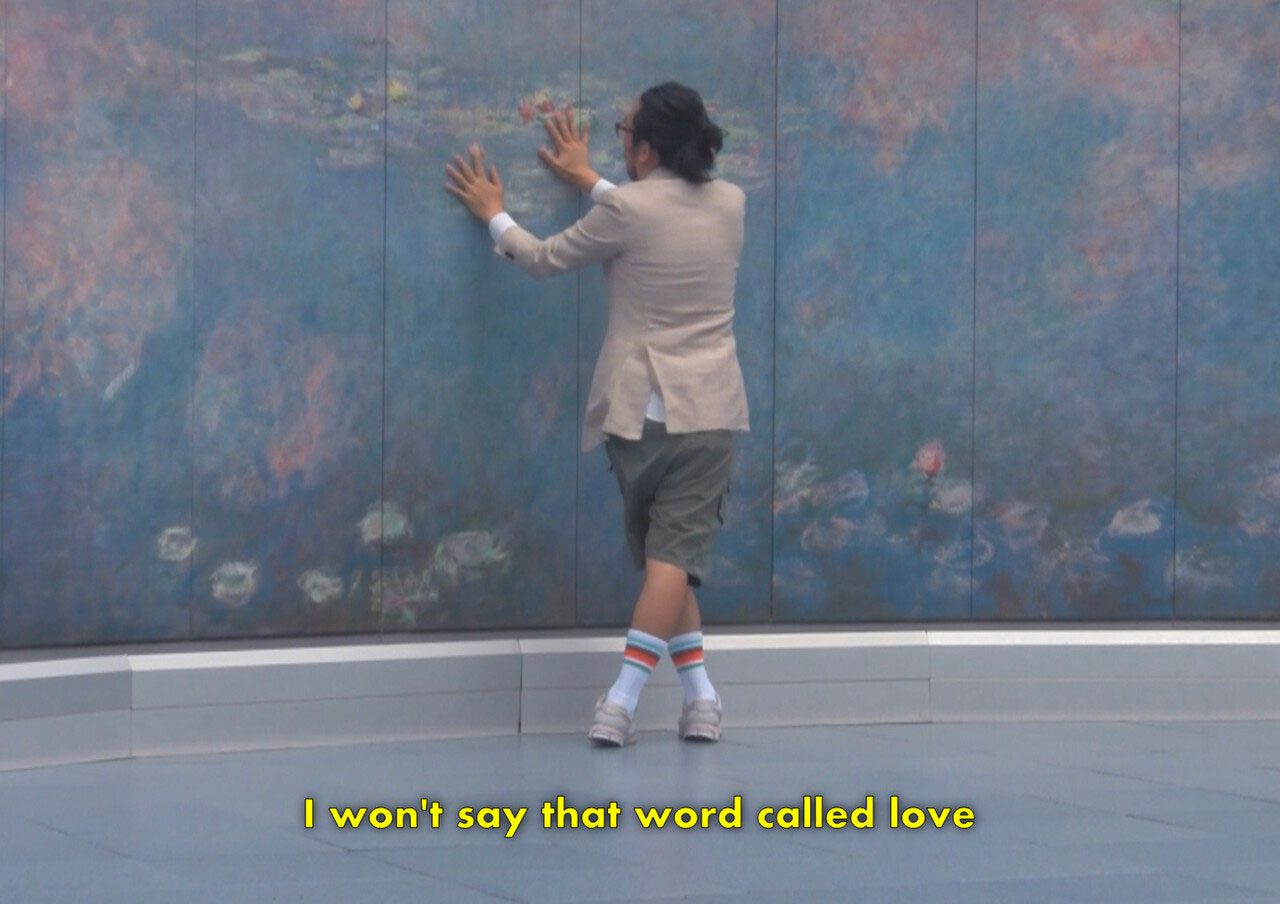
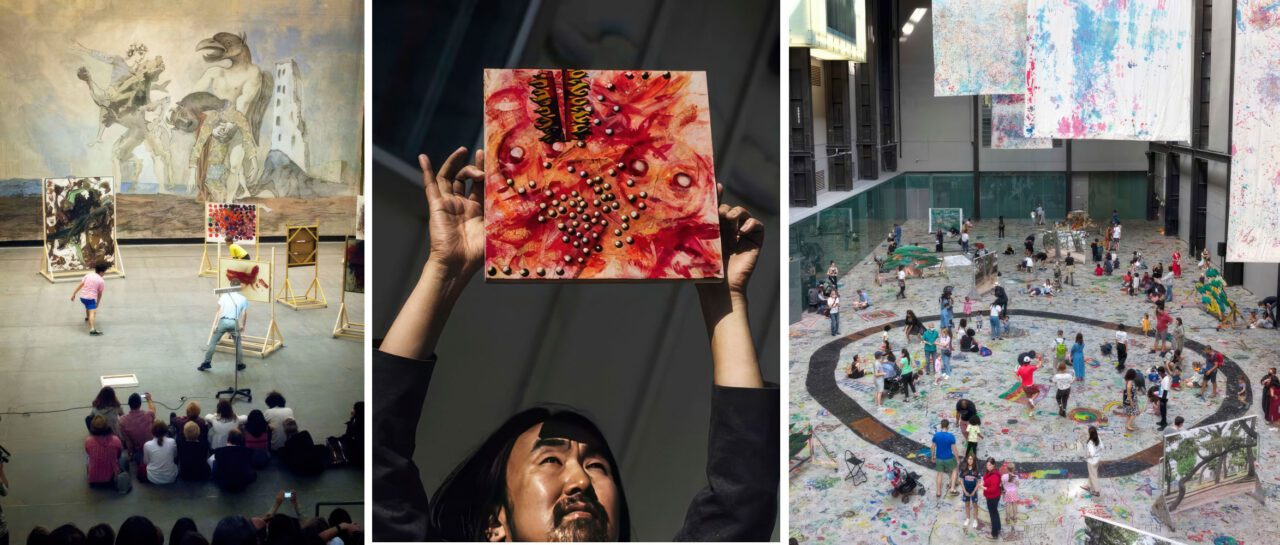
Center: Ei Arakawa-Nash holding Jutta Koether’s Demonic Options , 2008) , Photo: Ricardo Nagaoka Courtesy of the artist
Right: Ei Arakawa, Mega Please Draw Freely, 2021, Tate Modern, London, Photo: Rikard Österlund, Courtesy of the artist and Tate Modern, London
